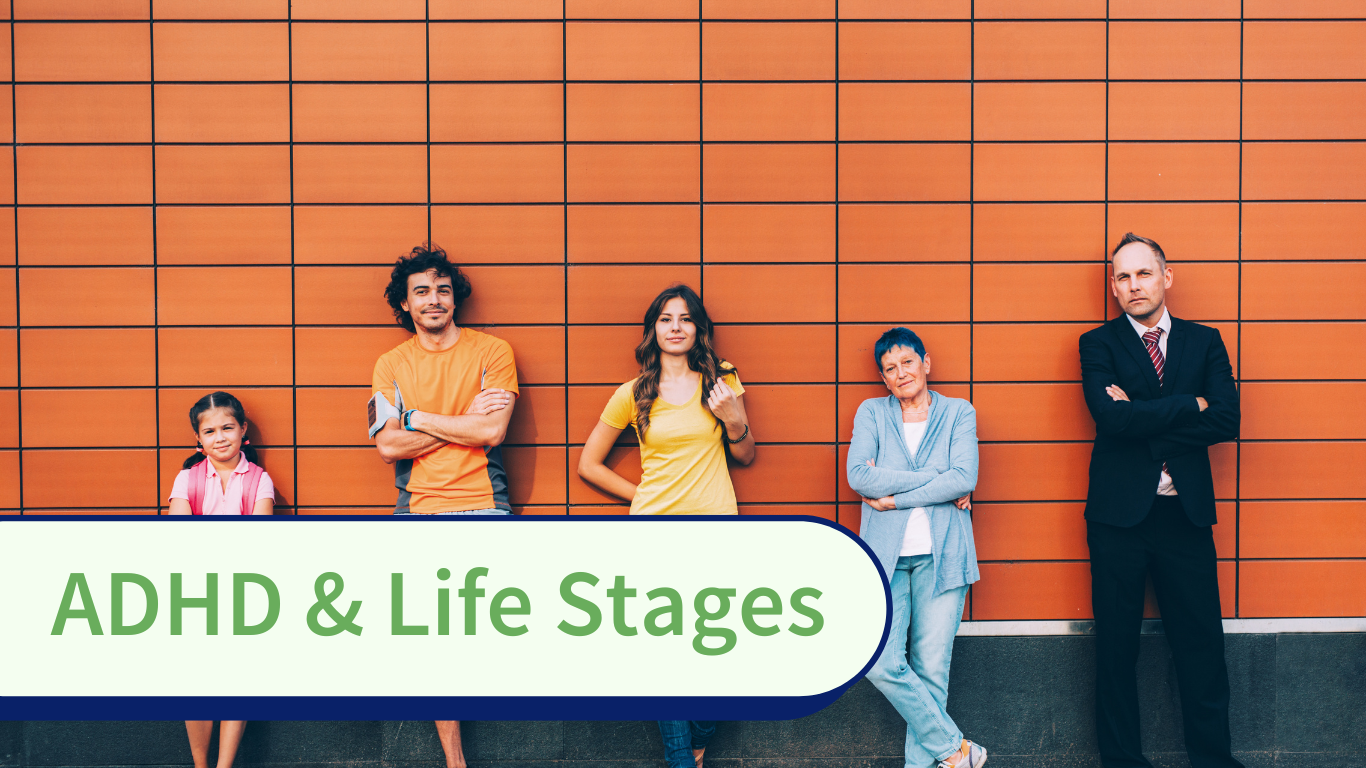ADHD doesn’t just appear in one stage of life—it travels with us, changing shape as we grow and as our lives shift. In fact, it’s often during transitions that ADHD symptoms become most apparent or impactful. Whether it’s heading off to college, starting a family, or entering your golden years, these moments challenge our executive function, self-awareness, and emotional resilience.
A recent study from the American Psychiatric Association highlights a major trend: adult ADHD diagnoses are rising—by nearly 11% annually between 2009 and 2019. This doesn’t necessarily mean ADHD is becoming more common. It means more people are finally connecting the dots—often during one of these big life shifts.
Let’s take a closer look at how ADHD can show up (and even shine) during life’s pivotal transitions.
ADHD in Childhood: Bouncing Brains and Big Feelings
In childhood, ADHD can show up in ways that are often misunderstood. A child who’s energetic and curious might be labeled disruptive. A daydreamer who’s slow to complete tasks might be seen as lazy. These traits are often the earliest signals of a brain wired for novelty, sensitivity, and nonlinear thinking.
Early ADHD symptoms can include emotional intensity, forgetfulness, difficulty following instructions, and a constant need for movement. These are not just behaviors—they are signals of how a child’s brain is trying to engage with a world that often isn’t designed for them.
Children with ADHD thrive when given tools that match how they think. Visual timers, consistent routines, and task breakdowns can make a world of difference—not just in performance, but in confidence. Recognizing ADHD early helps build self-understanding before shame and self-doubt take root.
ADHD and College: Independence Meets Overwhelm
College can be a thrilling fresh start—and also a massive test of executive functioning. The sudden loss of structure, new social demands, and academic pressure often leave students with ADHD feeling like they’re drowning in decision fatigue.
This is also a time when many individuals—especially women and high-masking students—receive their first ADHD diagnosis. But it’s not all struggle: students with ADHD often bring creativity, energy, and out-of-the-box problem solving to group work and passion projects.
Read more: ADHD and College Survival Guide – ADDitude Magazine
ADHD and Hormonal Shifts: What No One Talks About
Hormonal changes—like those during puberty, pregnancy, or menopause—can greatly impact ADHD symptoms, often intensifying them in unpredictable ways.
During menopause, for example, many women experience a surge in ADHD-related struggles with memory, focus, and emotional regulation. For those already diagnosed, symptoms might feel stronger. For others, it may be the first time they realize their challenges are part of a larger pattern.
Fluctuations in estrogen can directly influence dopamine—the very neurotransmitter tied to ADHD symptoms. Yet, hormonal ADHD is still rarely discussed in medical settings. That’s beginning to change, thanks to growing research and advocacy.
Understanding this connection can be empowering. It validates the lived experience of women and helps tailor treatment and support in more compassionate ways.
ADHD and New Parenthood: Sensory Chaos and Emotional Whiplash
Becoming a parent is overwhelming for anyone, but for neurodivergent parents, it can feel like your internal systems are constantly under siege. Unpredictable sleep, sensory overload, and disappearing time for self-care can push ADHD symptoms into overdrive.
Still, ADHD parents often bring deep empathy, flexible thinking, and unmatched creativity to their parenting. You might not follow every Pinterest chart, but your presence, humor, and problem-solving instincts are deeply valuable.
Read more: Parenting Challenges with ADHD – ADDA
ADHD and Career Pivots: Hidden Strengths in a New Context
Changing jobs or careers brings excitement, yes—but also tons of new systems, unspoken expectations, and shifting routines. For adults with ADHD, this can unearth all the friction points: remembering details, following up consistently, managing long-term tasks.
But here's the good news: people with ADHD often thrive in fast-paced environments that value adaptability and innovation. You might notice patterns others miss or offer ideas others wouldn’t dream of.
Read more: Embracing Squiggly Careers with ADHD – Allie Warren, LinkedIn
ADHD and Aging: Memory, Reflection, and Reframing
ADHD doesn’t disappear with age, though the way it shows up may shift. As routines settle and demands change, some symptoms like impulsivity may fade—but challenges with working memory, time blindness, or emotional regulation might persist (or resurface).
Later in life, many people look back and begin to recognize the signs in hindsight—whether they’ve been masked by coping strategies or simply misunderstood. But there can also be immense healing in understanding your brain better at any age.
Read more: ADHD in Seniors – ADDitude Magazine
Change Is Stressful—But It’s Also a Chance to Adapt
Every life transition is a chance to check in with your brain, your needs, and your support systems. It can feel destabilizing—but it can also be clarifying. These aren’t just high-stress moments. They’re high-potential ones.
By knowing that ADHD can look different depending on the chapter you’re in, you give yourself the grace to meet it with fresh curiosity. And tools like Brili can support that process by helping you simplify, structure, and breathe.
